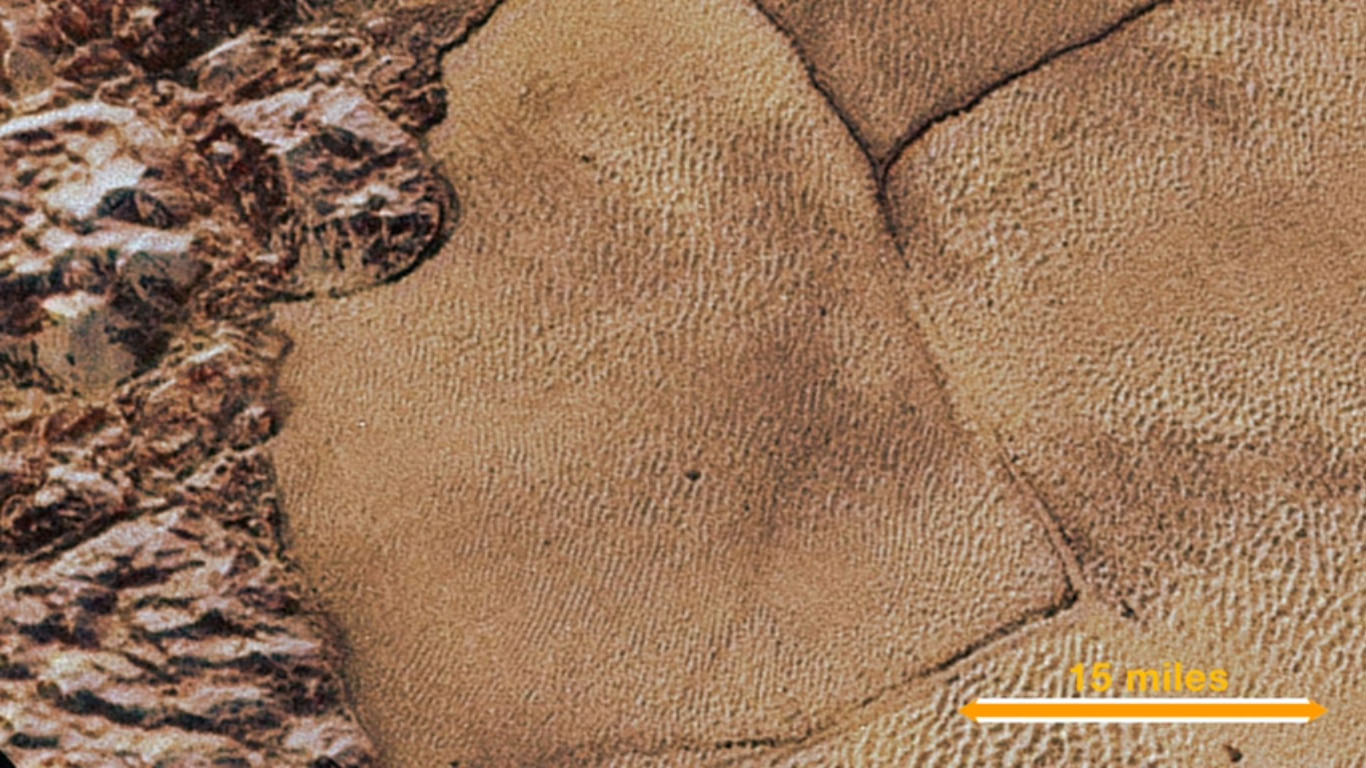Visit Pluto! New Video Simulates Landing on Dwarf Planet

If you've ever wondered what it might be like to land on Pluto, NASA has the video for you.
A new color movie combines more than 100 images taken by NASA's New Horizons spacecraft during the probe's historic Pluto flyby in the summer of 2015. The video shows just what it might be like to hitch a ride on a lander approaching the dwarf planet's surface.
NASA unveiled the video Thursday (Jan. 19), the 11th anniversary of New Horizons' launch, in 2006.
"The video offers a trip down onto the surface of Pluto — starting with a distant view of Pluto and its largest moon, Charon — and leading up to an eventual ride in for a 'landing' on the shoreline of Pluto's informally named Sputnik Planitia," NASA officials wrote in a video description. [Check out more amazing Pluto photos]
The agency also released a new global map of Pluto and stunning photo of the dwarf planet's moon Charon as a crescent lit by "Plutoshine."
New Horizons flew by Pluto and its five moons (Charon, Nix, Hydra, Kerberos and Styx) on July 14, 2015, and was just 7,800 miles (12,500 kilometers) from the dwarf planet at the closest point of the encounter. The flyby was the highlight of a 9.5-year trek across the solar system, a trip that sent New Horizons on a journey of more than 3 billion miles (4.8 billion km).
The new NASA video is a color version of this black and white video released on July 14, 2016, the one-year anniversary of New Horizons' Pluto encounter.
Breaking space news, the latest updates on rocket launches, skywatching events and more!
"To create a movie that makes viewers feel as if they're diving into Pluto, mission scientists had to interpolate some of the panchromatic (black and white) frames based on what they know Pluto looks like, to make it as smooth and seamless as possible," NASA officials wrote in the description.
"Low-resolution color from the Ralph color camera aboard New Horizons was then draped over the frames to give the best available, actual color simulation of what it would look like to descend from high altitude to Pluto's surface."
New Horizons is now headed for a new target at the edge of the solar system. On Jan. 1, 2019, the spacecraft will fly by a distant Kuiper Belt object known as 2014 MU69.
Email Tariq Malik at tmalik@space.com or follow him@tariqjmalik and Google+. Follow us @Spacedotcom, Facebook and Google+. Original article on Space.com.

Tariq is the award-winning Editor-in-Chief of Space.com and joined the team in 2001. He covers human spaceflight, as well as skywatching and entertainment. He became Space.com's Editor-in-Chief in 2019. Before joining Space.com, Tariq was a staff reporter for The Los Angeles Times covering education and city beats in La Habra, Fullerton and Huntington Beach. He's a recipient of the 2022 Harry Kolcum Award for excellence in space reporting and the 2025 Space Pioneer Award from the National Space Society. He is an Eagle Scout and Space Camp alum with journalism degrees from the USC and NYU. You can find Tariq at Space.com and as the co-host to the This Week In Space podcast on the TWiT network. To see his latest project, you can follow Tariq on Twitter @tariqjmalik.
